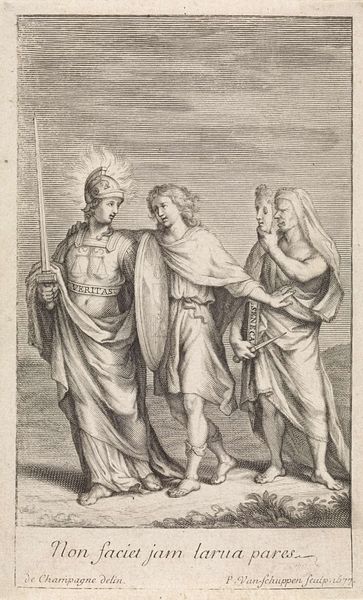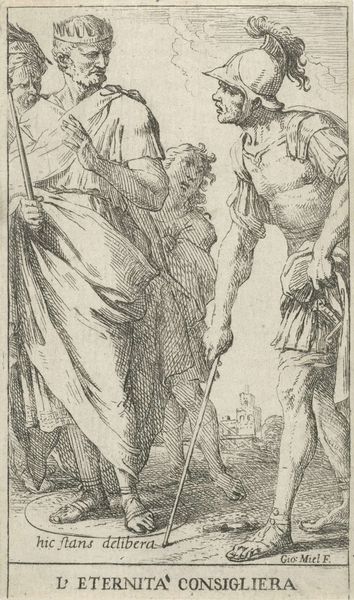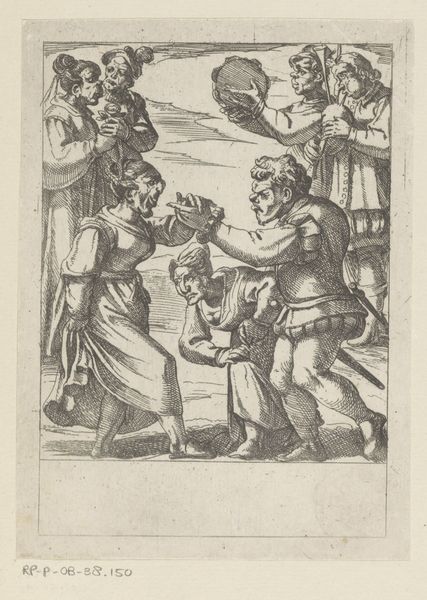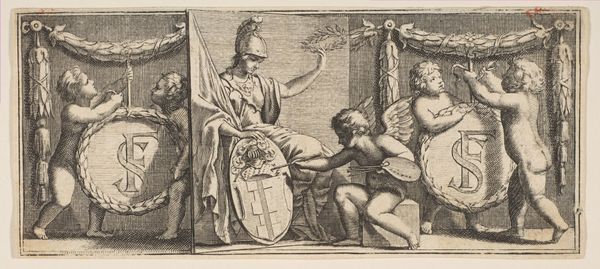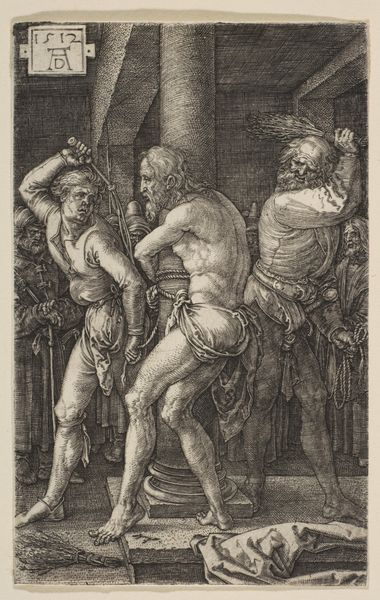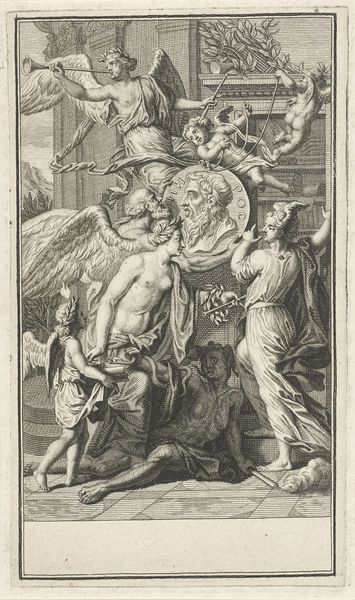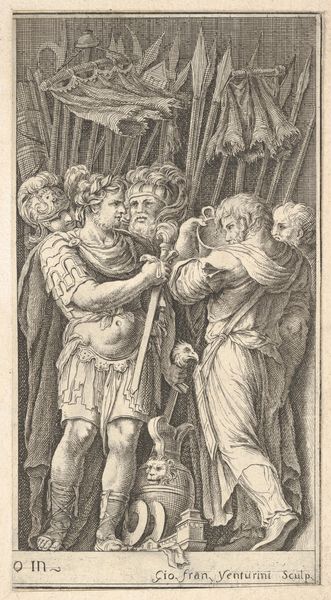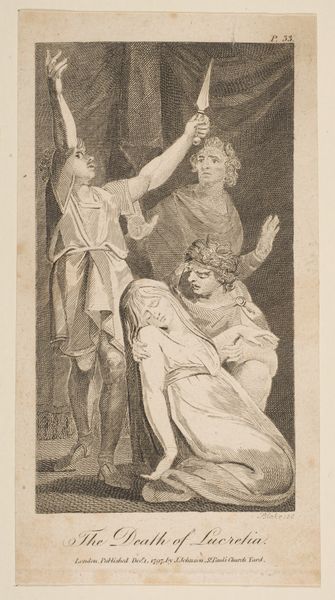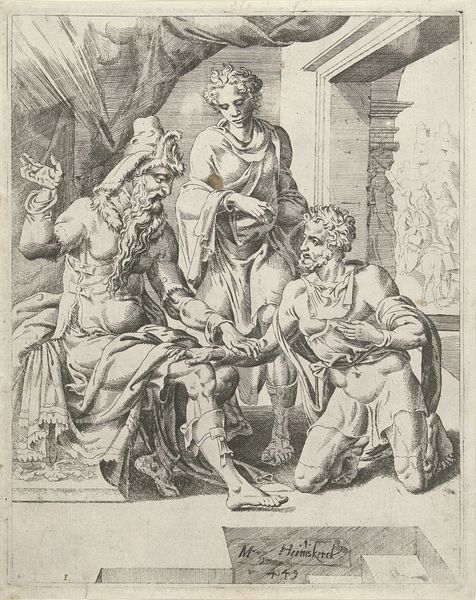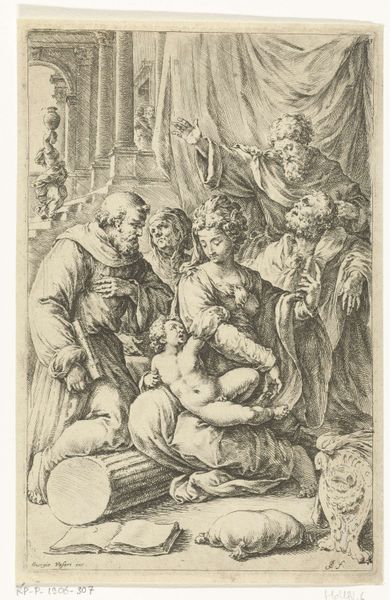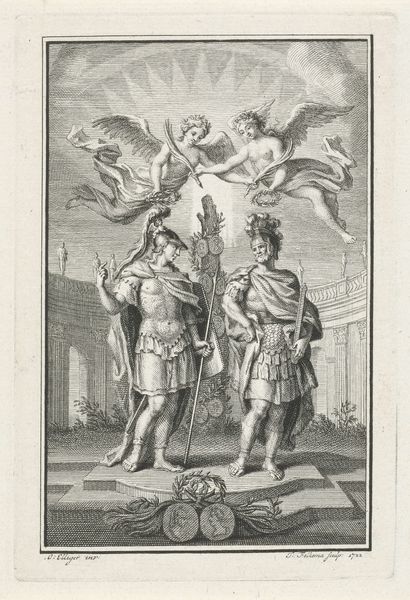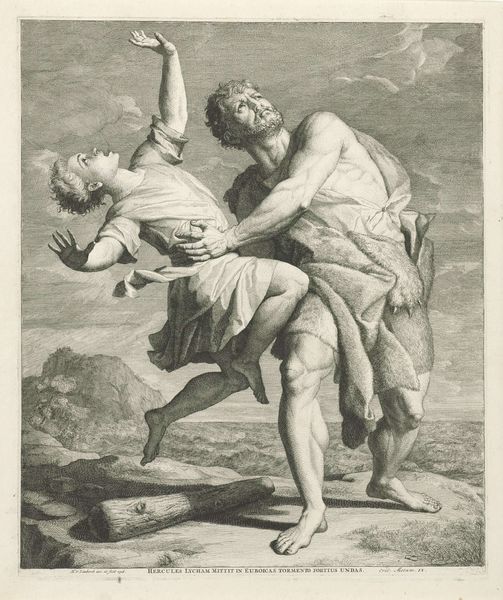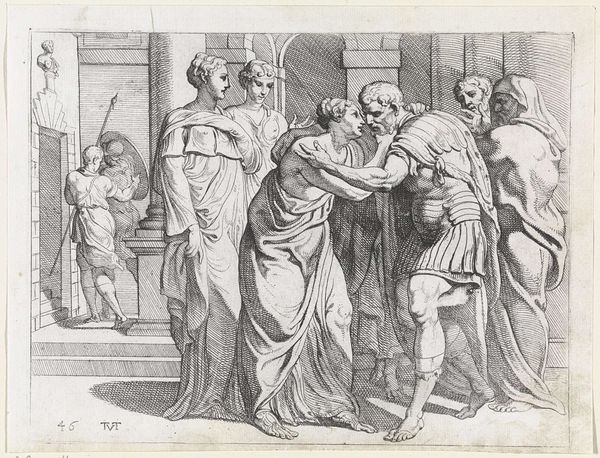
print, engraving
# print
#
classical-realism
#
figuration
#
history-painting
#
italian-renaissance
#
engraving
Dimensions: height 159 mm, width 112 mm
Copyright: Rijks Museum: Open Domain
Curator: Today, we are looking at a print by Battista Franco entitled "Perseus met twee putti en Hercules, op de rug gezien," placing its creation somewhere between 1520 and 1561. It's currently held here at the Rijksmuseum. Editor: My immediate impression is one of almost strained tension. The line work, while meticulous, feels quite rigid, particularly around the figures' musculature. There's a theatricality to the poses, almost like statuary captured in a frozen moment. Curator: Yes, I see that rigidity. However, look at Perseus, adorned with figures representing triumphs and strength; the putti clinging to him reinforce a sense of divine sanction. And the imposing figure of Hercules standing at his side. They invoke a lineage of power and heroic destiny rooted in antiquity. Editor: The composition creates a dialogue between these iconic figures, though. The formal arrangement highlights a kind of precariousness; Perseus holds the child in an unsteady pose, while Hercules is almost in the background looking the other way. It seems they lack dynamism that undercuts their idealized forms. Curator: True, yet these precise lines and defined figures also serve to memorialize idealized traits of heroism—the muscular definition signifying power, the calm countenance suggesting unwavering resolve, echoing the historical accounts and cultural values of the Renaissance. Editor: Perhaps. For me the classical-realist style combined with the figures themselves gives this Renaissance-era work an introspective look at the artistic ideals of the moment it was created. How do we reconcile power, divinity, and idealized male form? Curator: It really showcases the period's obsession with both classical mythology and the male figure as representative of strength, courage, and intellectual capacity, offering a cultural memory and connection to an idealized past that continues to resonate. Editor: For me it reflects how the artist grappled with capturing something meaningful with such stiff formalism; the lack of emotive interplay perhaps reflecting wider anxieties about legacy during a pivotal time in artistic production.
Comments
No comments
Be the first to comment and join the conversation on the ultimate creative platform.
